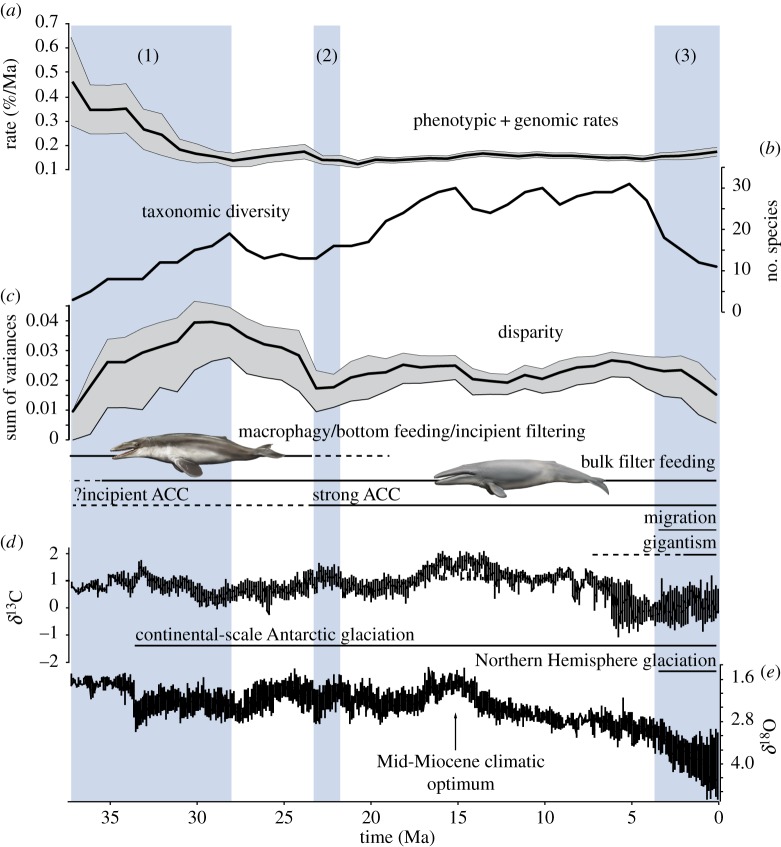Figure 4.
Major events in mysticete evolution driven by palaeoenvironmental change. High rates of phenotypic/genomic evolution (a) and an increase in taxonomic diversity (b) and disparity (c) mark an adaptive radiation during the initial phase of mysticete evolution (1), around the time of development of the ACC and the end of a global cooling trend. Rates and disparity subsequently decreased and then became stable from the Early Miocene onwards as the ACC developed its full strength and bulk filtering became the dominant feeding strategy (2). Diversity continued to rise and then remained stable during the Miocene, but markedly crashed towards the recent as the global climate deteriorated (d,e) and probably drove the final establishment of gigantism and, possibly, migration (3). Evolutionary rates represent the average of the mean rates for each branch in the dated total-evidence tree. Grey areas around the evolutionary rates and disparity curves represent the standard error of the mean and 95% confidence intervals (based on 1000 bootstrap replicates), respectively. Carbon and oxygen stable isotope data are from [45,46].

